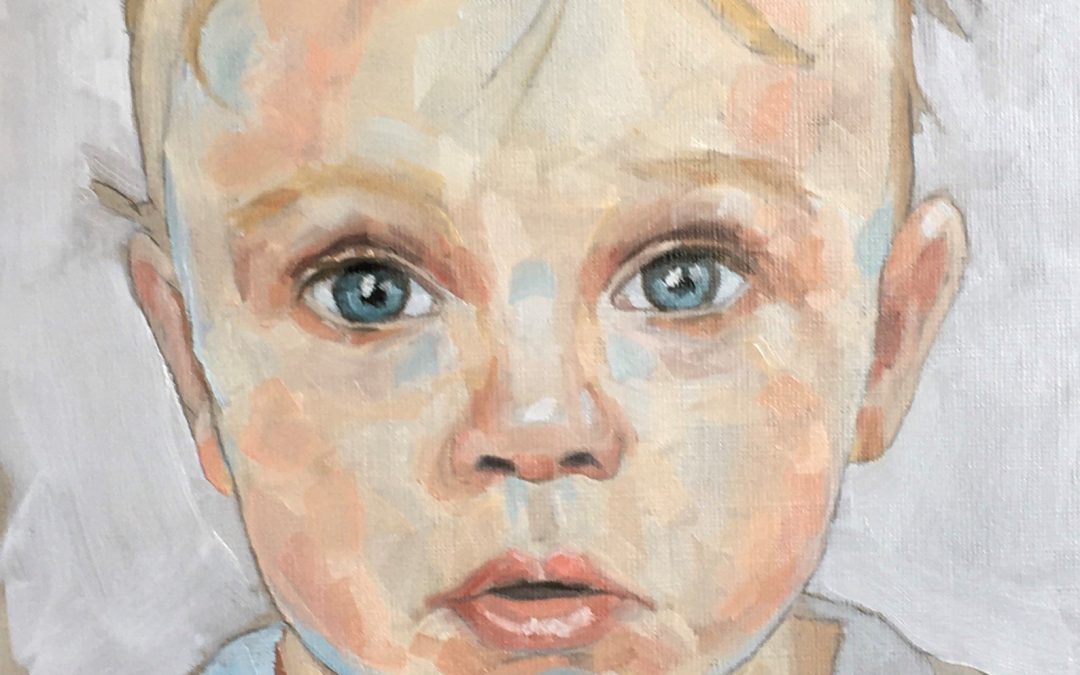I love immersing myself in the evening routine that I have built over time now for each first Wednesday of the month. Around 6.45pm I make myself a big mug of tea and settle down to watch Tina Willis Jones work her magic and show me how easy it is to produce an outstanding piece of portraiture in under an hour. Of course when I attempt the same portrait much later I don’t have anything near the same results, although if I spend a good half a day I make a reasonable attempt and there is certainly a likeness. The trick of course is to pay attention and to listen carefully to Tina’s wise words and follow her examples as closely as possible.
This month Tina used a photo reference of a little boy (very cute) and oils on panel. She explained how she likes to use flat brushes (her favourites are Pro Art Sterling short flats). She also uses a ‘Liquin’ medium(sparingly) and ‘Zest It’ to clean the brushes afterwards. She had prepared her work by tracing and transferring the image onto the paper which had been prepped using an acrylic wash with a fairly dark tone of ultra marine, burnt umber and a little yellow ochre. This piece of work will be completed in one pass.
Unusually for Tina she started with the white of the eyes (mixture of titanium white and Prussian blue) then moved onto the light mid tones before then tackling the dark areas. The challenge with children’s portraits is they have pale skin with the neck especially pale. The photo reference was also quite bleached, so Tina had to make decisions about the colours to warm up the composition and create a more 3D look to the painting. For example she made the nose pinker than the photo. It is absolutely fine to use different colours – the important point is that the tonal values are the same. Remember to check your tones against the reference too. Tina also takes time to place the paint, with each mark very precisely laid down. She does not blend the colours on the paper and finds that this approach keeps the portrait fresh.
Another problem with children of course is getting them to sit still and as a result you may have to rely more on photographs. Maybe it is a good idea to have parents take the images. Alternatively you might need to take lots and lots of pictures. It will be natural for the child to try and pose for you, however they will quickly get tired and perhaps then the photos will become more natural.
Excellent examples of artist who paint child portraits are Jane French and Joan Eardley if you have a moment please do check out their work.
The result of the evenings demonstration is a beautiful pure study that captures the delicate features of the model perfectly. Thank you again Tina for a most informative evening.
Tina is running portrait classes at the moment with the next online course starting Saturday 29th May. Please contact her via the following links if you would like more information:
www.facebook.com/tinawillisjonesart
